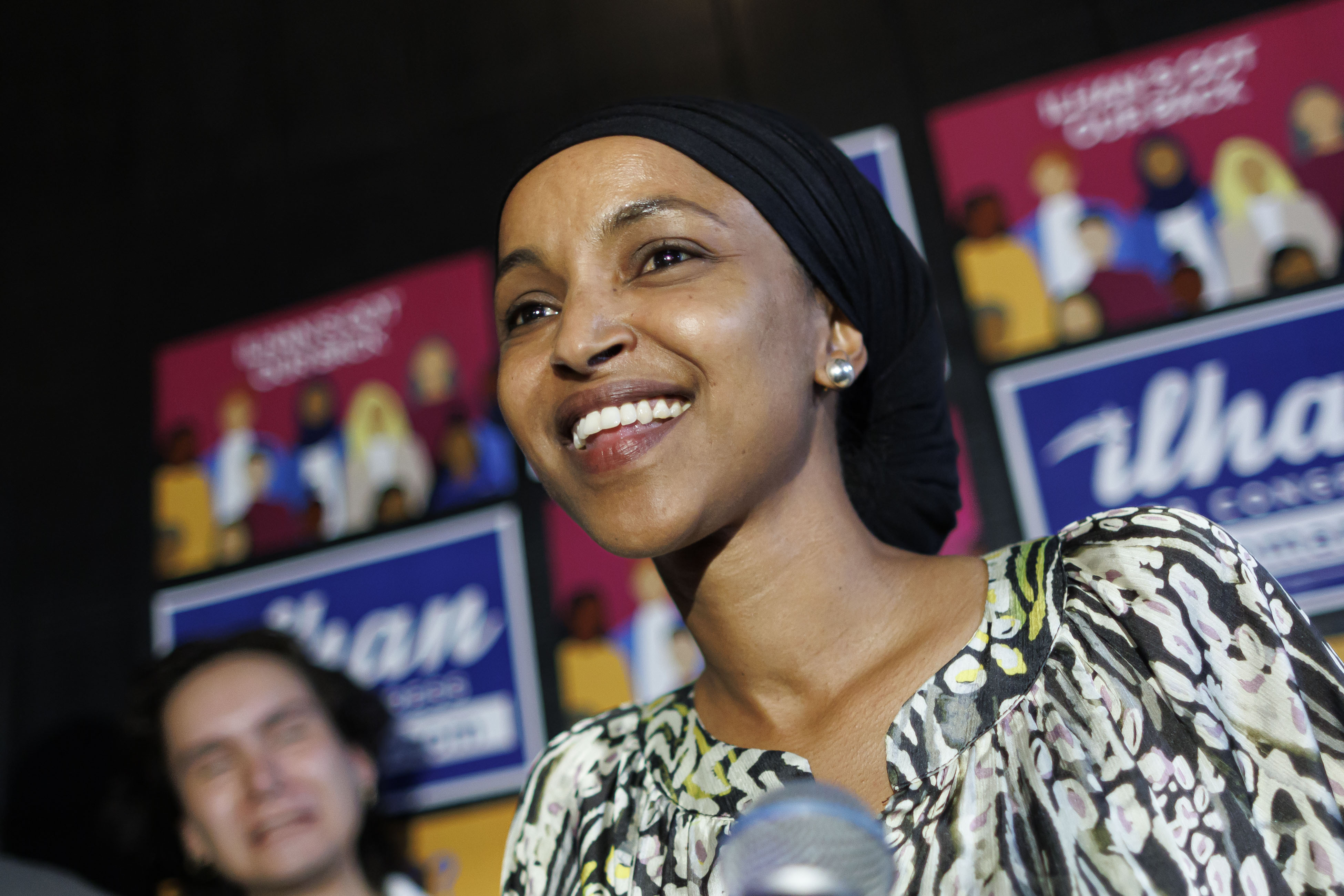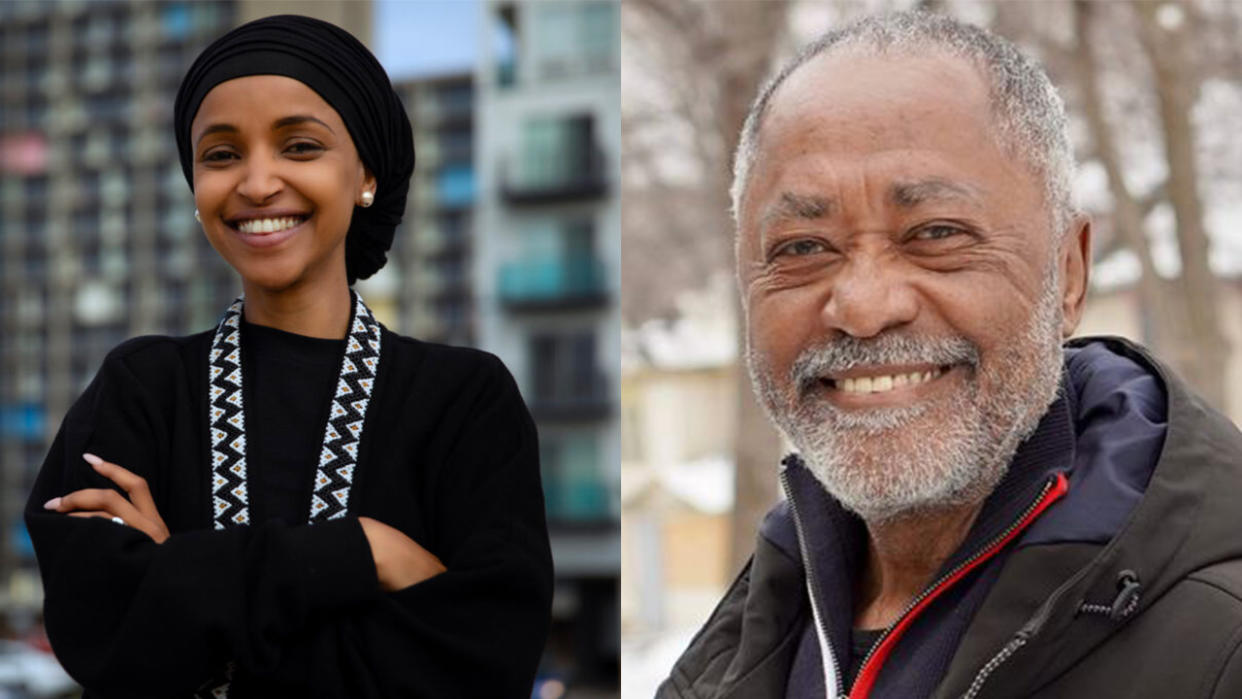Ilhan Omar’s Electoral History
Ilhan Omar’s electoral journey has been marked by her consistent victories in a diverse and dynamic district, demonstrating her appeal to a wide range of voters. Her success can be attributed to a combination of factors, including her strong grassroots organizing, her progressive platform, and her ability to connect with voters on a personal level.
Electoral Timeline
Ilhan Omar’s electoral history reflects her steady rise in Minnesota politics. Here is a timeline of her elections:
- 2016: Minnesota House of Representatives – Omar won the Democratic-Farmer-Labor (DFL) primary and the general election, representing District 60B in the Minnesota House of Representatives.
- 2018: United States House of Representatives – Omar won the DFL primary and the general election, becoming the first Somali-American elected to the United States Congress. She represented Minnesota’s 5th congressional district, a diverse district encompassing parts of Minneapolis and St. Paul.
- 2020: United States House of Representatives – Omar won re-election in the 5th congressional district, defeating Republican challenger Lacy Johnson.
- 2022: United States House of Representatives – Omar won re-election in the 5th congressional district, defeating Republican challenger Cicely Davis.
Demographics of Ilhan Omar’s Districts
Ilhan Omar’s electoral success is tied to her ability to connect with voters in diverse districts. The demographics of her districts have changed over time, but they have consistently been characterized by a high proportion of minority voters.
- 2016: Minnesota House of Representatives (District 60B) – This district was approximately 50% white, 25% Black, 15% Asian, and 10% Hispanic. The district was also relatively young, with a median age of 30.
- 2018: United States House of Representatives (5th Congressional District) – This district was approximately 40% white, 30% Black, 20% Asian, and 10% Hispanic. The district was also relatively young, with a median age of 32.
- 2020 and 2022: United States House of Representatives (5th Congressional District) – The demographics of the 5th Congressional District remained largely consistent between 2018 and 2022.
Political Opponents
Ilhan Omar has faced a variety of political opponents throughout her career. Her opponents have ranged from moderate Democrats to conservative Republicans, reflecting the diverse political landscape of her districts.
- 2016: Minnesota House of Representatives – Omar’s opponent in the general election was Republican candidate Phil Krinkie. Krinkie was a business owner and political newcomer.
- 2018: United States House of Representatives – Omar’s opponent in the general election was Republican candidate Jennifer Zielinski. Zielinski was a former state representative and a conservative candidate.
- 2020: United States House of Representatives – Omar’s opponent in the general election was Republican candidate Lacy Johnson. Johnson was a political newcomer and a conservative candidate.
- 2022: United States House of Representatives – Omar’s opponent in the general election was Republican candidate Cicely Davis. Davis was a political newcomer and a conservative candidate.
Voter Turnout
Voter turnout in Ilhan Omar’s elections has generally been higher than the national average, reflecting the high level of engagement among voters in her districts.
- 2016: Minnesota House of Representatives – Voter turnout in District 60B was approximately 60%, which was higher than the statewide average of 55%.
- 2018: United States House of Representatives – Voter turnout in the 5th Congressional District was approximately 70%, which was higher than the national average of 50%.
- 2020: United States House of Representatives – Voter turnout in the 5th Congressional District was approximately 75%, which was higher than the national average of 67%.
- 2022: United States House of Representatives – Voter turnout in the 5th Congressional District was approximately 65%, which was higher than the national average of 55%.
Analysis of Election Results: Ilhan Omar Election Results

Ilhan Omar’s electoral history is a fascinating case study in the interplay of various factors that shape election outcomes. Her victories and defeats can be attributed to a complex interplay of party affiliation, campaign spending, media coverage, and national political trends.
Party Affiliation, Ilhan omar election results
Party affiliation plays a crucial role in elections, particularly in the United States, where the two-party system dominates. Ilhan Omar, a member of the Democratic Party, has benefited from the strong support of her party base in her district. Her consistent victories in heavily Democratic districts demonstrate the power of party loyalty in shaping election results. In contrast, her defeats in Republican-leaning districts highlight the challenges faced by Democrats in areas with a strong Republican presence.
Campaign Spending
Campaign spending is another critical factor influencing election outcomes. Candidates with greater financial resources can afford to run more extensive campaigns, reaching a wider audience through advertising and other outreach efforts. Ilhan Omar’s campaigns have consistently outspent her opponents, demonstrating the significance of financial resources in modern elections. However, it is important to note that campaign spending alone does not guarantee victory. Effective campaign strategies and strong voter mobilization efforts are also essential.
Media Coverage
Media coverage can significantly impact a candidate’s image and influence public opinion. Ilhan Omar has been the subject of extensive media coverage, both positive and negative. Her outspoken views on social and political issues have attracted considerable attention, both from supporters and detractors. While positive media coverage can boost a candidate’s profile and generate support, negative coverage can damage their reputation and hurt their chances of winning.
National Political Trends
National political trends can also affect local elections. In recent years, there has been a growing polarization in American politics, with Democrats and Republicans increasingly divided on key issues. This polarization has contributed to a more intense and competitive political landscape, where local elections are often seen as a reflection of national political battles. Ilhan Omar’s elections have been influenced by these national trends, with her victories often occurring during periods of Democratic dominance and her defeats coinciding with Republican gains.
Vote Share and Margin of Victory
The following table compares the vote share and margin of victory in Ilhan Omar’s elections:
| Election | Year | Vote Share | Margin of Victory |
|—|—|—|—|
| Minnesota House of Representatives | 2016 | 57.5% | 12.5% |
| United States House of Representatives | 2018 | 78.0% | 36.0% |
| United States House of Representatives | 2020 | 68.5% | 27.5% |
Impact of Ilhan Omar’s Elections

Ilhan Omar’s election victories have had a profound impact on American politics and society, both within the Democratic Party and in the national discourse. Her success as the first Somali-American and one of the first Muslim women elected to Congress has challenged traditional notions of representation and sparked a national conversation about diversity, identity, and the future of American politics.
Influence on National Political Discourse
Ilhan Omar’s presence in Congress has been marked by her outspoken advocacy for progressive policies and her willingness to challenge the status quo. Her outspoken criticisms of the Israeli government and her support for the Boycott, Divestment, and Sanctions (BDS) movement have sparked intense debates about free speech, anti-Semitism, and the role of foreign policy in American politics.
- Criticism of Israel: Omar’s criticism of Israeli policies, particularly its treatment of Palestinians, has been a constant source of controversy. Her statements have been condemned by some as anti-Semitic, while others have defended her right to criticize the Israeli government.
- Support for BDS: Omar’s support for the BDS movement, which aims to boycott, divest from, and sanction Israel until it ends its occupation of Palestinian territories, has further fueled tensions. Her advocacy for the movement has been seen by some as a form of delegitimization of Israel, while others have argued that it is a legitimate form of political activism.
- Focus on Social Justice: Omar has also been a vocal advocate for social justice issues, including racial justice, LGBTQ+ rights, and environmental protection. Her focus on these issues has resonated with many young voters and progressive activists, who see her as a champion of their values.
Ilhan omar election results – Ilhan Omar’s election results are always a hot topic, especially with all the drama surrounding her. But hey, at least she’s got a pretty solid fanbase, judging by the ilhan omar polls. Of course, those polls don’t necessarily predict the future, but they do give us a glimpse into how the public feels about her.
Who knows, maybe she’ll even win by a landslide next time! (Or maybe not, but hey, a girl can dream, right?)
Ilhan Omar’s election results were pretty wild, especially considering the competition. It’s like watching a reality TV show where everyone’s vying for the spotlight. But hey, at least it’s not as chaotic as the Michigan primary results , which were more like a full-blown circus act! Anyway, back to Omar, she definitely knows how to keep things interesting.
